As a disabled veteran, you may be eligible for disability benefits through the United States Department of Veterans Affairs. Your service-connected disability may entitle you to monthly compensation benefits and services for you and your family members. To be eligible for these benefits, you need to prove a service connection between your disability and your military service as part of the application process.
5 Ways to Prove a VA Service Connection
- Direct service connection
- Presumptive service connection
- Secondary service connection
- Aggravation of a before-service disability during service
- Service connection for injuries caused by the VA health care system
When you submit a VA claim for disability benefits, the VA requires you to explain your disability, how it affects you, and how it occurred. The disability must be connected to your active duty service in some way, whether it was caused by your service or aggravated during your service time. Proving your service connection is necessary for the VA to decide whether you’re eligible for VA benefits as someone with a medical condition related to their service.
There are a few types of service connections that may qualify you for VA benefits, as noted above. You can use the appropriate service connection based on your circumstances to prove that your disability is related to your service time.
What Is a Service Connected Disability?
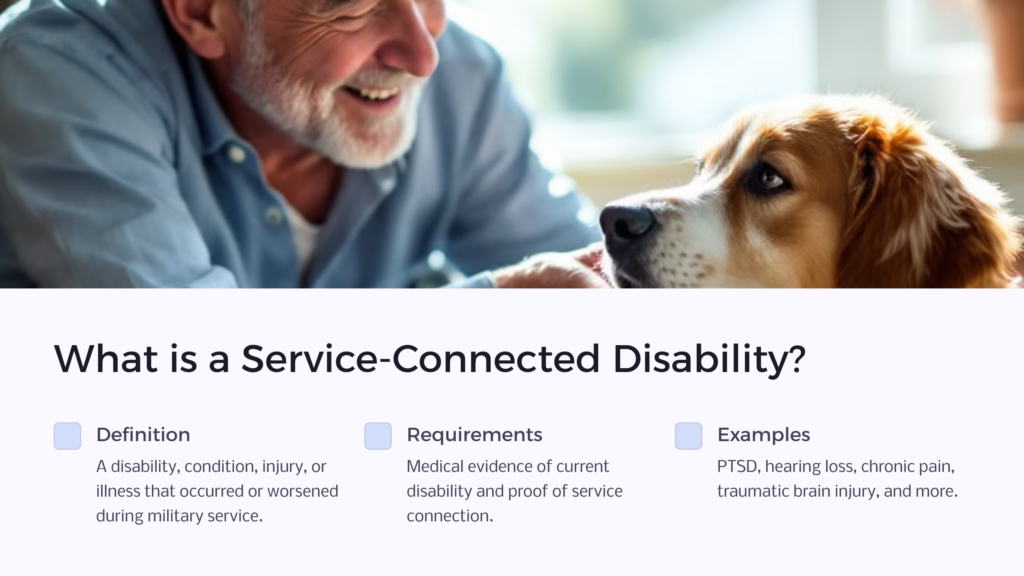
A service connected disability is a disability, medical condition, injury, or illness that either happened during your military service or was made worse by your service. The VA requires medical evidence that your condition exists and currently causes your symptoms, denoting it as a current disability. Additionally, the VA requires proof of the service connection to your disability or condition to get disability compensation and other benefits.
Not all conditions will qualify you for VA benefits, but many of them do so long as you can make the connection between them and your military service. The following list of service-connected disabilities isn’t comprehensive, but serve as examples of potentially eligible conditions:
- Depression or anxiety
- Post-traumatic stress disorder (PTSD)
- Hearing loss/deafness
- Vision loss/blindness
- Cancer
- Breathing problems, like sleep apnea
- Diabetes
- Loss of range of motion
- Chronic back pain
- Traumatic brain injury (TBI)
- Ulcers
- Heart disease and other cardiovascular conditions
- Loss of a limb
- Infectious diseases
Some conditions are not eligible for VA benefits because the VA doesn’t consider them to relate to military service. If you have any of these conditions and use them for your application, you are likely to receive a VA disability claim denial. These may include:
- Developmental or intellectual disabilities
- Some anxiety-driven disorders
- Speech conditions
- Personality disorders, like borderline personality disorder
- Genetic conditions or congenital disabilities
- Allergies
5 Ways to Prove a VA Service Connection
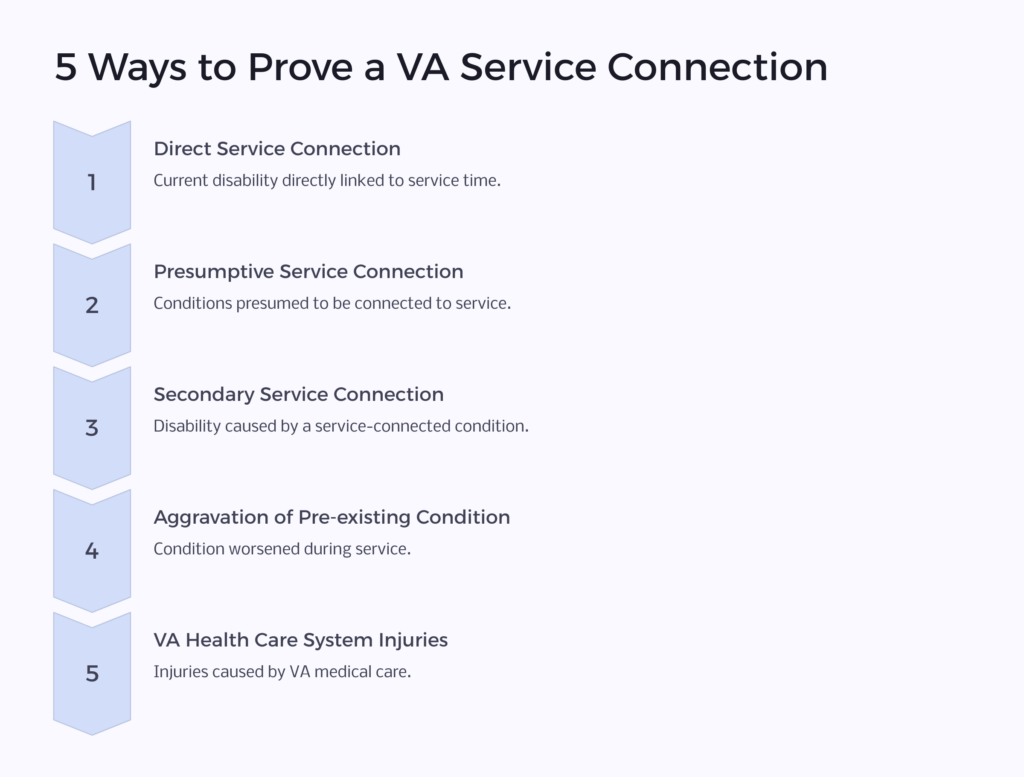
Your veterans disability benefits application relies on your ability to prove a service connection to your condition. The following are the types of service connections you can use to prove your case. If you believe that your disability is service connected, but you’ve received a denial letter, you can consult a veterans service officer (VSO) or veterans disability attorney to help you file an appeal.
1. Direct Service Connection
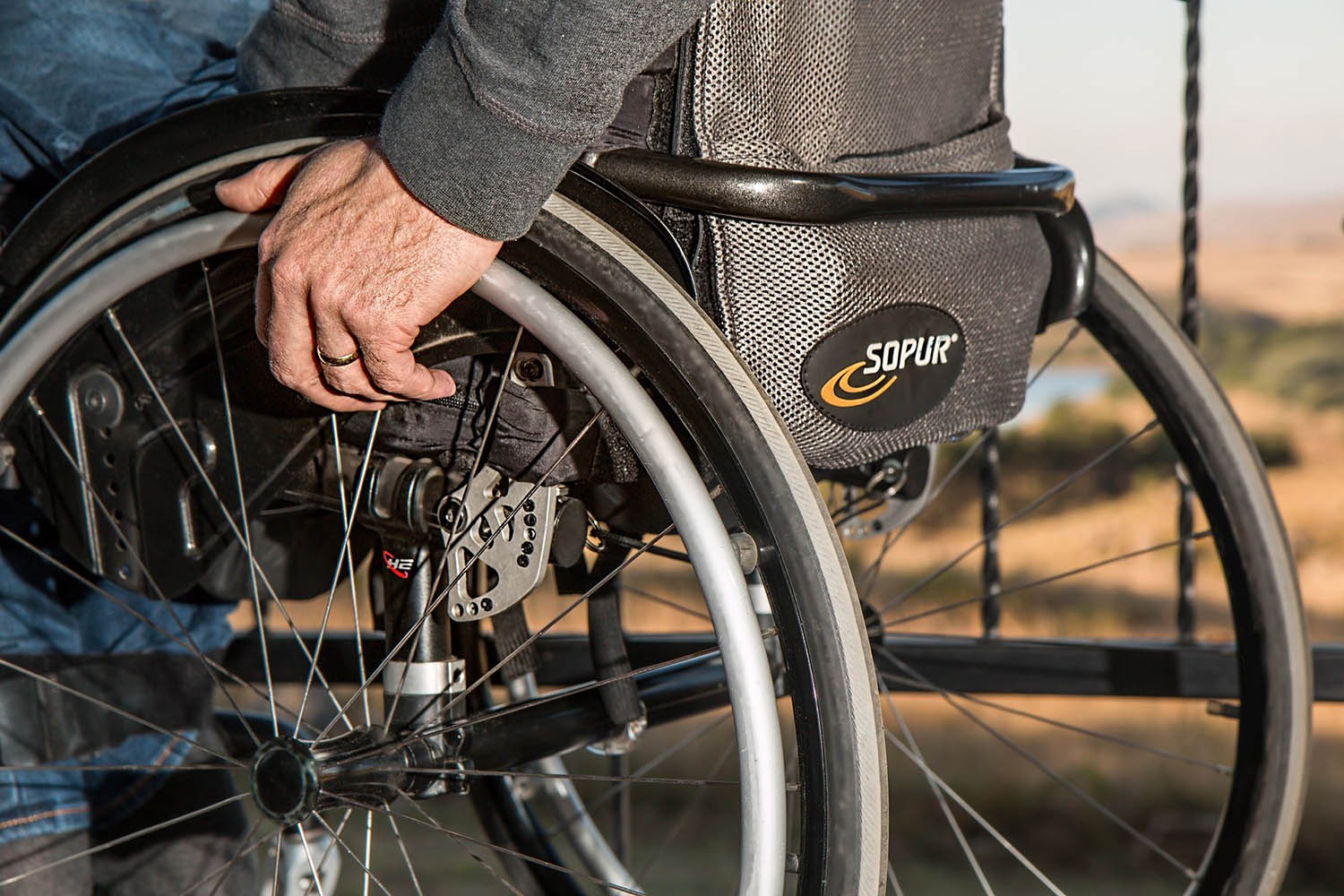 A direct service connection is one of the most common types of service connected disability. This connection happens when a current disability comes directly from your time in the service. For instance, if you lost the use of one of your arms because of an injury that happened during active duty, you may be able to prove a direct service connection. Similarly, developing cancer from exposure to Agent Orange or another carcinogen while on active duty could lead you to a direct service connection.
A direct service connection is one of the most common types of service connected disability. This connection happens when a current disability comes directly from your time in the service. For instance, if you lost the use of one of your arms because of an injury that happened during active duty, you may be able to prove a direct service connection. Similarly, developing cancer from exposure to Agent Orange or another carcinogen while on active duty could lead you to a direct service connection.
Sometimes, the injury or illness you incurred during your service will be noted in your discharge papers. This usually only occurs when there is enough medical evidence, like doctor’s visits and diagnoses, to prove the symptoms of your injury or illness. This information is usually enough to establish the connection between your service and your current condition.
However, some service members do not have this information documented throughout their time in the service if their symptoms didn’t occur until after they left the service. This can happen with lung conditions, heart conditions, cancer, and other medical problems that may not show up right away. In these circumstances, you may find it more challenging to prove the service connection.
Still, it’s possible to do so by including as much information as you have with your application. Writing a complete statement and sending in medical records, personnel records, and any other data you have could help you prove your case.
2. Presumptive Service Connection
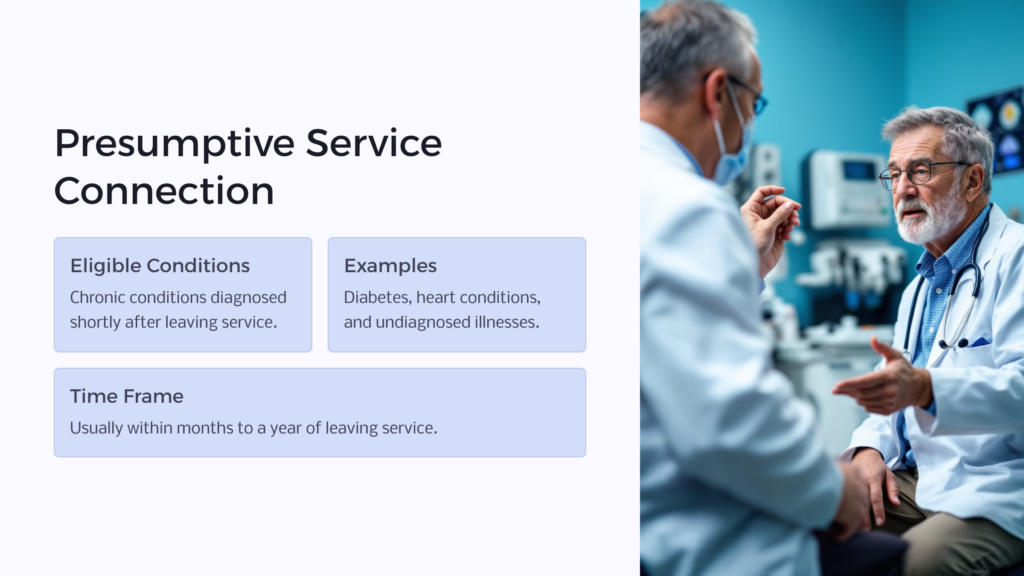
Unlike a direct service connection, a presumptive service connection is one in which a service member has some type of condition that the VA presumes to be connected to their time in active duty. This connection usually happens when a veteran gets diagnosed with an eligible chronic condition within a few months to a year of leaving the service. Still, it can also occur in other circumstances.
Diabetes and heart conditions often fall within a presumptive service connection because they can be challenging to prove that they stemmed directly from your time in the service. However, these conditions can sometimes be caused by or aggravated by your military service. Because it’s challenging to show clear proof of the connection, the VA may assume that your condition is related to your service if it’s within a close time of you leaving the service.
Undiagnosed conditions may also be recognized under a presumptive service connection, but you may not get a high VA disability rating if you can’t prove a diagnosis. Chronic fatigue, muscle pain, digestive issues, headaches or migraines, or neurological symptoms may qualify you for VA benefits. However, if you are experiencing such symptoms, it’s in your best interest to seek out a medical professional who works with you to find a proper diagnosis that you can present to the VA.
3. Secondary Service Connection
To qualify for a secondary service connection, you must first have a direct service connected disability. A secondary service connection disability is one that occurs because of another service connected disability. For example, if you have a hormone deficiency, your condition could have been caused by another condition that occurred during your service, like a traumatic brain injury. In this case, the VA may connect your conditions together, leading to a secondary service connection.
Your secondary disability is not required to come from your time in the service. However, this disability needs to somehow stem from your condition relating to your service to qualify for a secondary service connection. If you were diagnosed with diabetes while on active duty but were diagnosed with heart disease after leaving the service, your heart condition may become a secondary service connection.
In some cases, the VA may still grant a secondary service connection when a direct service connection hasn’t yet been proven. Some presumptive service connections, for example, can lead to a secondary service connection if there’s a good chance that those conditions occurred because of your military service, and they may have aggravated your secondary condition.
To receive compensation for a secondary condition, you typically need to show evidence of your primary condition and how it relates to your service and provide medical evidence of your secondary condition. Even if the VA gives you a 0% rating for your primary disability, you may be eligible for a higher rating for your secondary disability.
4. Aggravation of a Before-Service Disability During Service
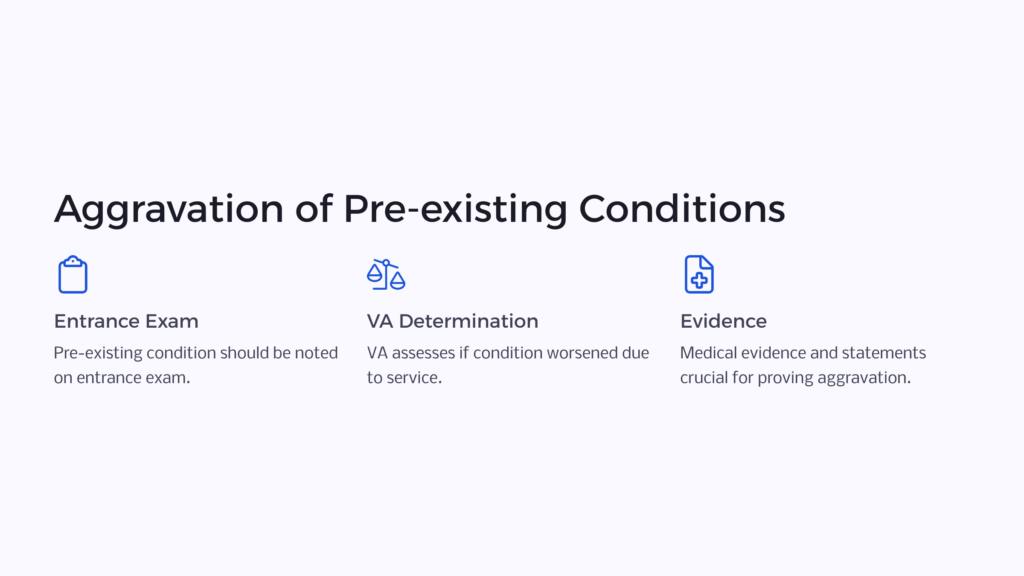
Did you enter active duty with a preexisting condition? If so, that condition should have been noted in your entrance exam. The VA will use this information if you submit a claim for VA benefits under the assumption of an aggravated service connection. This service connection relates to any conditions that may have been exacerbated by your time in service.
When you claim this connection, the VA has the responsibility of determining whether your condition has progressed naturally or has progressed faster because of your time in the service. This can be a challenging determination to make, so it’s a good idea to arm your application with plenty of medical evidence and statements from your medical team that can help you prove that your condition worsened because of your service.
The tricky part of this service connection is especially apparent in genetic conditions that often progress naturally as one ages. During the determination process, the VA will consider all evidence you and your medical team provide to decide whether your condition worsened because of your service or if it would have met its current state regardless. The VA will also only allow this connection when your condition has been deemed to be a permanent disability.
5. Service Connection for Injuries Caused By the VA Health Care System
The VA may approve a VA disability claim if you can prove that you incurred an injury, illness, or medical condition because of any care you received through the VA health care system. The VA allows this service connection when you can prove that you either incurred a new condition or your existing condition became aggravated because of the health care you received.
This service connection isn’t common, but it can be easy to prove if you have documentation of your medical visits and evidence to support your claim. You’ll need to prove that your condition happened through the fault of the VA medical facility because of negligence, inadequate medical care, lack of skill, or another reason. It may be necessary to receive a medical opinion from a different facility and physician that can back up your claim.
These veteran’s disability claims are treated as a different type of claim and benefits, known as Section 1151 benefits. You do not have to file a new claim to receive benefits under Section 1151, but you’ll still need to provide evidence to the VA to ask for your rating and benefits to increase. You can also choose to create a new claim for a secondary disability.
What is a Service Related Disability?
Understanding what is a VA service connection and how to prove a VA service connection are integral parts of the process of applying for service connected disability compensation. The VA looks explicitly for medical and personnel evidence that demonstrates that your current disability and symptoms are a result of your time in the service.
Fortunately, veterans have a few ways to show the connection between their service and their condition. Still, it’s necessary to know which connection type is relevant to your case to help you complete your application. If you need assistance with filling out your application or filing an appeal after a denial, you can enlist a VSO or a VA disability attorney for guidance.
 Benefits.com Advisors
Benefits.com Advisors
With expertise spanning local, state, and federal benefit programs, our team is dedicated to guiding individuals towards the perfect program tailored to their unique circumstances.
Rise to the top with Peak Benefits!
Join our Peak Benefits Newsletter for the latest news, resources, and offers on all things government benefits.


















